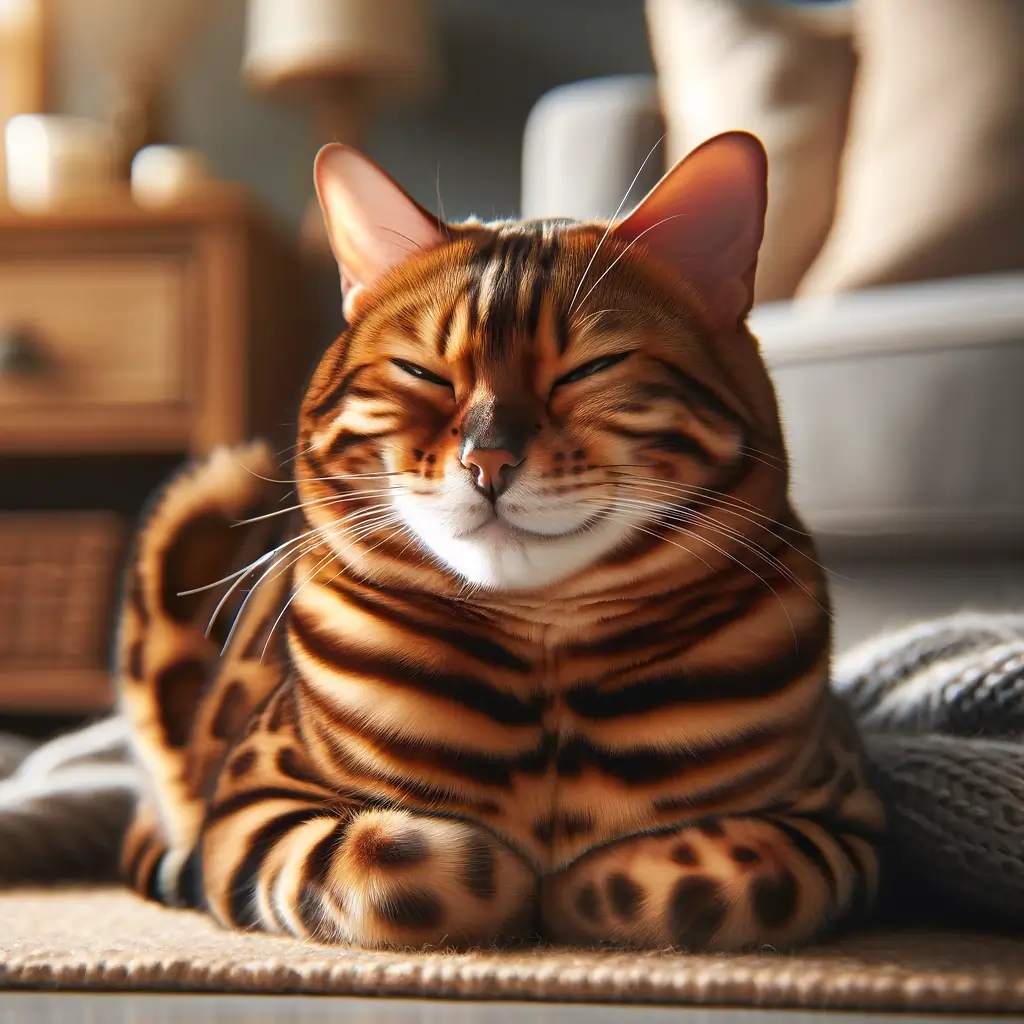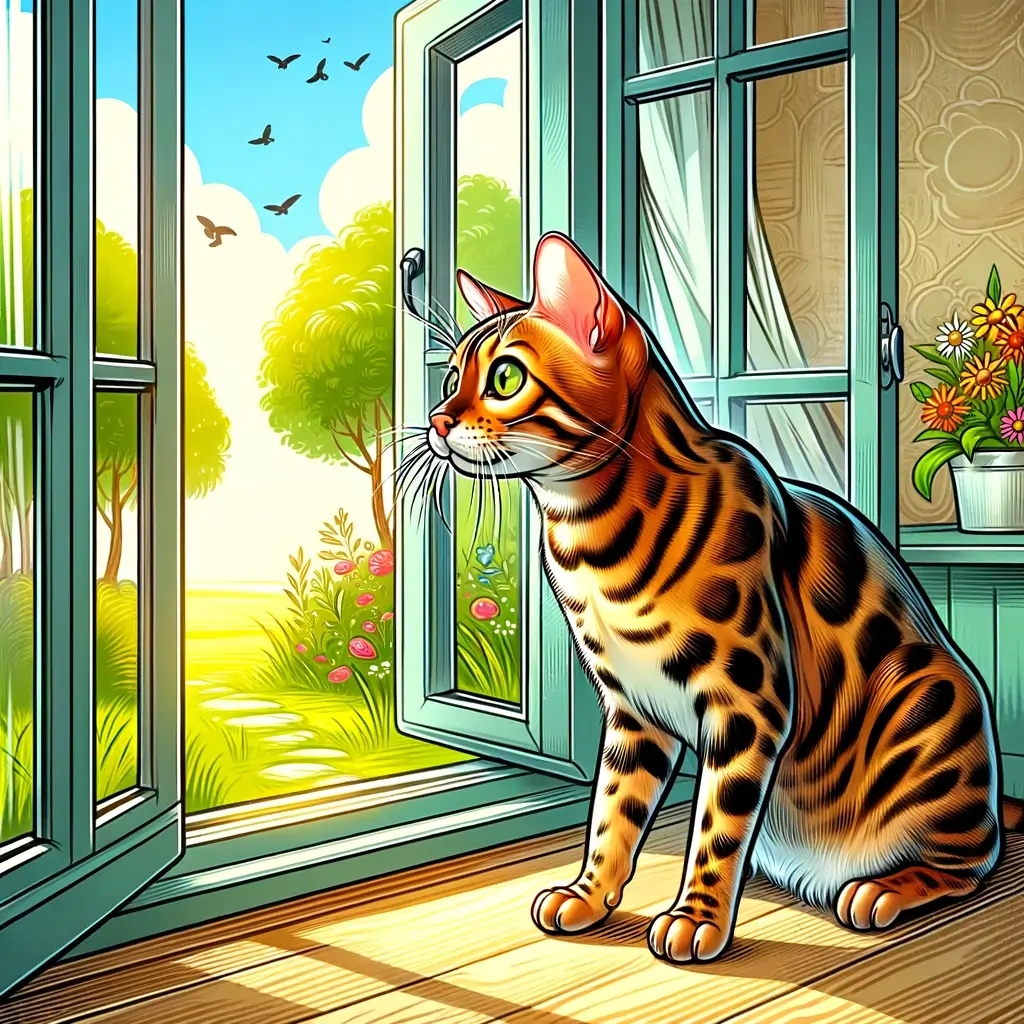Welcome to our guide on disciplining Bengal cats and improving their behavior. Bengal cats are known for their unique temperament and active nature, which can sometimes lead to challenges in their behavior. In this article, we will provide you with effective strategies to discipline your Bengal cat, creating a harmonious environment for both you and your feline companion.
Training a Bengal cat requires a combination of patience, consistency, and understanding. By implementing the discipline techniques approved by veterinarians, you can build a positive relationship with your Bengal and address any behavioral issues that may arise.
Understanding Bengal Cat Behavior
Before diving into training techniques, it’s important to understand the behavior of Bengal cats. These feline companions are known for their active nature and can sometimes exhibit unwanted behaviors such as scratching furniture or aggression. By delving into the reasons behind these misbehaviors, we can implement the appropriate discipline techniques to promote a well-behaved Bengal cat.
Territorial Instincts and the Need for Mental Stimulation
Bengal cats have a strong territorial instinct, which can lead to behaviors such as marking their territory or becoming possessive of their surroundings. Providing them with plenty of mental stimulation can help channel their energy in a positive way. Engage your Bengal cat in interactive play sessions and provide them with toys that encourage mental engagement.
Mental stimulation not only keeps your Bengal cat entertained but also helps fulfill their natural instincts, reducing the likelihood of them misbehaving out of boredom or frustration.
Playtime to Release Excess Energy
Bengals are known for their high energy levels and need for physical exercise. Regular playtime sessions are essential in promoting good behavior. Schedule daily interactive play sessions with your Bengal cat to help them release their excess energy.
During playtime, use toys that allow your Bengal cat to engage their natural hunting instincts, such as feather wands or puzzle toys that require problem-solving. By providing an outlet for their energy, you can help prevent destructive behaviors that arise from pent-up energy.
Redirecting Scratching Behavior
Scratching furniture is a common issue faced by Bengal cat owners. To prevent damage to your furniture, it’s important to provide appropriate alternatives for your Bengal cat to scratch.
Place multiple scratching posts around your home, ensuring they are sturdy and tall to allow for a full stretch. Sprinkle catnip on the posts to encourage your Bengal cat to use them. Regularly trim your cat’s nails to minimize the damage caused by scratching.
Dealing with Aggression
Aggression can sometimes be a challenge with Bengal cats. When dealing with aggression, it is crucial to avoid any form of physical punishment, as this can escalate the issue. Instead, focus on providing positive reinforcement for calm behavior.
If your Bengal cat becomes aggressive, try redirecting their energy through interactive play sessions or providing a safe space for them to retreat to when feeling threatened or overwhelmed.
Positive Reinforcement: Rewarding Good Behavior
Positive reinforcement is an incredibly effective technique when it comes to disciplining a Bengal cat. By rewarding good behavior, you can create a positive environment that encourages your cat to continue behaving well. It’s important to understand the significance of bonding with your cat and utilizing treats and praise as rewards for their positive actions.
Bonding with your cat is crucial for establishing trust and strengthening your relationship. Spend quality time with your Bengal, engage in interactive play sessions, and provide plenty of affection and attention. This helps create a positive emotional connection and makes them more receptive to training and discipline.
When it comes to rewarding good behavior, treats play a key role. Use small, tasty treats that your cat loves as a way to reinforce positive actions. For example, if your Bengal follows a command, uses the litter box properly, or refrains from scratching furniture, immediately reward them with a treat and verbal praise. This positive association helps to reinforce the desired behavior and encourages your cat to repeat it in the future.
“Positive reinforcement is an incredibly effective technique when it comes to disciplining a Bengal cat.”
Verbal praise is another important component of positive reinforcement. Cats respond well to a soothing and encouraging tone of voice. Use words like “good job” or “well done” when your Bengal exhibits good behavior. The combination of treats and praise creates a powerful incentive for your cat to behave positively and helps to reinforce the bond between you.
When training a Bengal kitten, it’s important to start early and be consistent. Kittens are highly impressionable and eager to learn. Use positive reinforcement techniques from the beginning to establish good behaviors and create a positive environment for them to thrive in. By reinforcing positive actions and ignoring undesirable ones, you can shape your kitten’s behavior and set them up for a lifetime of good manners.

Redirection and Deterrents: Discouraging Unwanted Behavior
In this section, we will explore techniques to redirect your cat’s behavior and discourage unwanted actions. It’s important to understand how to redirect their energy and teach them what behaviors are acceptable. Using physical punishment is never recommended, as it can cause fear and aggression in your Bengal cat, damaging the trust between you and your feline companion.
Redirecting Scratching Behavior
One common issue Bengal cat owners face is their cat scratching furniture. Instead of resorting to physical punishment, provide appropriate scratching posts to redirect their scratching behavior. Place these posts near the furniture they tend to scratch, ensuring they have a sturdy, tall, and sisal-covered surface.
Additionally, you can make the furniture less appealing by using a deterrent spray. These sprays are specially formulated to have a scent that cats dislike, such as citrus or lavender. Apply the deterrent spray to the furniture you want to protect, and it should discourage your Bengal cat from scratching.
| Redirecting Scratching Behavior | Deterrent Spray |
|---|---|
| Provide appropriate scratching posts | Apply on furniture to make it less appealing |
| Sturdy, tall, and sisal-covered surface | Formulated with scents cats dislike |
Discouraging Aggressive Behavior
If your Bengal cat becomes aggressive, it’s important to discourage this behavior gently. Never resort to physical punishment, as it can further escalate their aggression. Instead, use positive reinforcement techniques to redirect their energy and reward calm behavior.
When your cat becomes aggressive, try redirecting their attention to a toy or a treat. Engage them in playtime and encourage activities that allow them to release their pent-up energy. By providing alternative outlets for their aggression, you can discourage aggressive behavior and promote a more peaceful environment.
Additionally, consulting with a professional animal behaviorist or veterinarian can provide valuable insights and guidance on how to discourage aggressive behaviors effectively.
Remember, patience and consistency are key when disciplining your Bengal cat. By using redirection techniques and positive reinforcement instead of physical punishment, you can build a strong bond with your feline companion and create a harmonious home environment.
Conclusion
Disciplining a Bengal cat requires time, patience, and a thorough understanding of their behavior. By implementing the vet-approved tips and tricks discussed in this article, you can effectively train your Bengal cat to exhibit good behavior. Remember to create a positive environment that encourages positive reinforcement and understanding their unique needs.
Building a strong bond with your Bengal cat is essential in establishing a harmonious relationship. Through dedication and consistency, you can guide your cat towards desirable behaviors and foster a healthy and happy companionship. Train your Bengal cat with love and respect, and they will reward you with their loyalty and good behavior.
Understanding your Bengal cat’s behavior is key to addressing any unwanted actions. By redirecting their energy and utilizing appropriate deterrents, you can discourage scratching furniture and prevent aggression. Keep in mind that physical punishment is never recommended and can worsen their behavior. Instead, focus on providing mental stimulation, engaging playtime, and redirecting their instincts towards acceptable behaviors.
FAQs
Q: How can I discipline my Bengal cat?
A: When disciplining your Bengal cat, focus on positive reinforcement techniques such as rewarding good behavior and creating a safe and stimulating environment for your cat to thrive in.
Q: What are some effective discipline techniques for Bengal cats?
A: Some effective discipline techniques for Bengal cats include teaching your cat alternatives to undesired behaviors, using a firm but gentle tone when correcting your cat, and providing your cat with plenty of toys and activities to keep them engaged.
Q: Is it okay to punish my Bengal cat when they misbehave?
A: It is not recommended to punish your Bengal cat when they misbehave. Instead, focus on redirecting their behavior to more appropriate activities and rewarding them for good behavior.
Q: How can I teach my Bengal cat to stop certain behaviors?
A: To teach your Bengal cat to stop certain behaviors, provide them with alternative outlets for their energy and instincts, such as climbing perches, interactive toys, and designated scratching areas.
Q: I have a naughty Bengal kitten, what should I do?
A: If you have a naughty Bengal kitten, it’s important to set clear boundaries and provide consistent training and positive reinforcement to help them learn proper behaviors as they grow.

Hey guys, My name is Simon Smith. I’m from Canada and live near Victoria
I live with my sweet family and have 20+ Ragdolls of different types. I love them as my own children. My profession is as a hotel manager.
I love to keep Ragdolls and grow their breeder case. I have 7 years of experience.
I’m an expert in cat care. So, I’m here to provide you with new information about my cats daily. This is my personal blog website, so I request that you kindly visit our site daily.
If you’re a Ragdolls lover and you have any questions or confusion about cats, text me on the Contact Us page or Gmail.
Thank u
